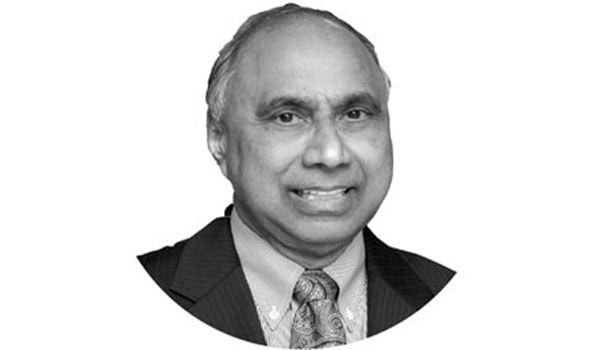Sailing through inflation wave
INFLATION is having a traumatizing effect on low and middle-income people in Pakistan andin nations around the world.
The impact of inflation internationally was highlighted by an analysis of 44 advanced countries which found that consumer prices in nearly all of them have surged considerably compared to pre-pandemic times.
Turkey had experienced the highest inflation rate in this study at 54.8 per cent and Israel had the largest jump in the rate from 0. 13 per cent to 3.36 per cent.
Analysts agree that the global trend of rising inflation has not peaked yet. The same pattern and trajectory hold true for Pakistan.
Pakistan’s Central Bank reports that the country’s inflation rate was 13.76 per cent for the past few months. That is the highest since 2008-09.
A recent Sensitive Price Indicator report, released by the Pakistan Bureau of Statistics, revealed that from June 2021 to June 2022 lower to middle income groups suffered from a 28.03 per cent hike in the prices of51 essential items.
Various financial analysts project that the official inflation rate in Pakistan will cross 25 per cent mark.
Steve H Hanke, Johns Hopkins University Applied Economics Professor, claimed in a tweet that Pakistan’s inflation is actually soaring at 44.76 per cent per year, about 3.2 times more than the official rate of inflation.
Multiple factors account for Pakistan’s rising prices and inflation. Many of those factors in its inflationary waves such as rising fuel and transportation charges, global supply chain disruption and surging commodity prices are the same as in other countries.
In addition, as indicated in a report by World Bank experts, there are some other factors that contribute to the inflation in Pakistan.
The report states, “The underlying causes of price increases are stagnant and fluctuating agriculture productivity, inefficient use of key natural resources particularly water, and limited innovation, as well as weather-related shocks.”
The citation of variable “agriculture productivity” which necessitates imports of high value agricultural and dairy products is especially worrisome because Pakistan’s economy is allegedly agro-based.
This condition is exacerbated by continuous currency devaluation coupled with removing subsidies on essential items as part of the International Monetary Fund bailout package which makes conditions even worse for the average Pakistani.
As noted at the outset of this piece, Pakistan is not in this inflationary predicament alone. Turbulent inflationary waves caused by the same factors are sweeping the entire planet.
All of the countries in the world can be conceptualized as ships trying to make it through those shared waves without sinking.
In addition, each country is having to navigate those waves which are particular to its own situation.
Because of this, to arrive at port successfully, will require a blend of local and global solutions.
Given the widespread impact of the inflation, this could be the time for governmental and philanthropic organizations to come together and create strategies to combat and counteract the effects of the inflationary waves on the Pakistani people.
One area to consider in this regard would be to investigate restructuring and extending state-level welfare programs such as the “Ehsaas” or “Benanzir Income Support Program”, under which various mega scale financial and health initiatives are being carried out.
Looking at the long term, Pakistan could develop and initiate new policies directed at promoting agro-business growth in Pakistan.
These policies could include: Encouraging young people to participate in agro-businesses. Making sustainable investment opportunities to draw young entrepreneurs towards smart farming projects.
Controlling prices in the wheat, sugar and cotton markets in order to shift the agricultural focus to other high-value agricultural and dairy products.
Upgrading agricultural research for new and better crops, effective production technologies and better control of pests.
At the global level, Pakistan can join in the efforts to bring the world out of the crisis in energy and food prices created by the Russia-Ukraine war.
It could do this by supporting calls to oil producing countries to lower energy fuel prices. It could also endorse UN Secretary General António Guterres’ suggestion to ease sanctions on agriculture exports of Russia and Belarus in exchange for the safe flow of Ukrainian grains around the world.
As Secretary General Gutteres stated, “There is no effective solution to the food crisis without reintegrating Ukraine’s food production, as well as the food and fertilizer produced by Russia and Belarus, into world markets, despite the war,” In conclusion, with the proper planning and actions, Pakistan and other ships of state around the world can sail through the inflationary waves successfully and enable their citizens to surf them as well.
—The writer is an Entrepreneur, Civic Leader, and Thought Leader based in Washington DC.










